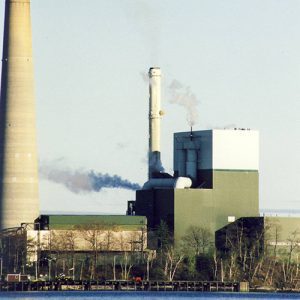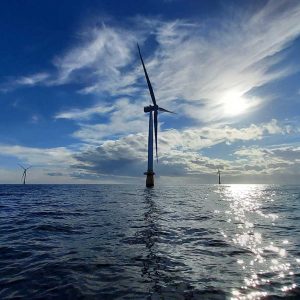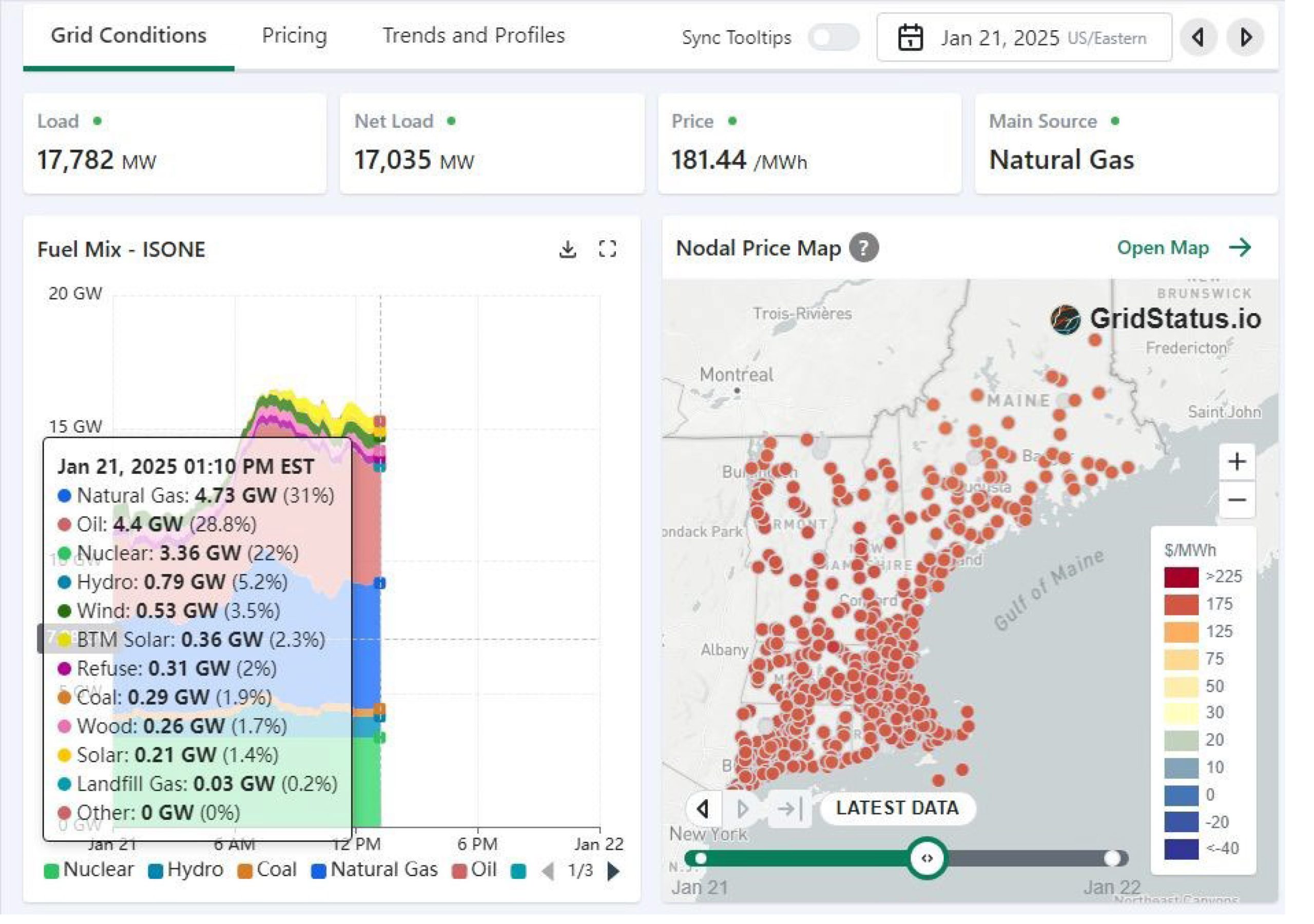
Wyman Station, by Beth Comeau
The cold streaks Mainers have faced in recent weeks, combined with President Trump’s early actions blocking homegrown wind energy and the delivery of funding already approved by Congress to help our communities, provide an opportunity to revisit the connection between wind power and energy costs.
January 21st was a great example of how offshore wind can lower wholesale electricity prices in New England (as has been shown in study after study after study after study, after study).
Here’s how.
When it’s cold and demand is high, electricity market prices are also high. During these times of peak demand, the New England region relies on expensive “peaker” power plants, such as Wyman Station in Yarmouth, that rely on dirty oil to generate energy. Big energy companies are invested in keeping these peaker plants operational because they can make a lot of money, even if they only operate a few hours or days per year.
Because methane gas or natural gas is a major heating fuel in other New England states, in cold weather heating is prioritized, raising the price of fuel for power plants.
As you can see from this screenshot, (you can view real-time data on gridstatus.io) on January 21, expensive and dirty oil generation is close on the heels of natural gas for the largest generation source in the region. But at the same time, abundant (and clean) wind in the Gulf of Maine was blowing at 24 knots.
If we had had a substantial amount of offshore wind generation online on the 21st of January — generation capacity which requires no fuel — it would have displaced a good amount of that expensive generation capacity.

Offshore wind turbines, by JShapiro/NRCM
While those day-to-day savings wouldn’t be passed directly through to electricity customers, these dynamics in aggregate are what drive the supply portion of the bills that people and businesses pay for electricity in Maine and explain how wind pushes down electricity prices.
This isn’t the only way clean energy reduces costs for electricity customers. Last year, the New England grid operator found that rooftop solar was making such a large contribution to the New England grid, that a large and polluting power plant in Massachusetts being subsidized by all New England ratepayers could close down without any negative impact to reliability.
All that will come from Congress or the Trump Administration rolling back programs that support wind, solar, and other clean energy technologies is more of the high and volatile electricity prices and dependence on out-of-state oil and gas that is harming Maine families and businesses.
If we want lower and more stable energy costs, new jobs and new opportunities for local entrepreneurs to create new businesses, and to take control of our own energy destiny in Maine, we should continue to diversify our energy supply by investing in homegrown clean energy sources like wind and solar.
—Jack Shapiro, NRCM Climate & Clean Energy Director











Leave a Reply